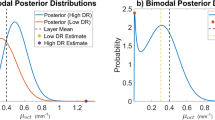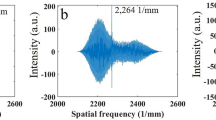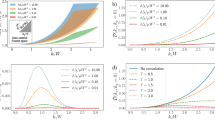Abstract
Photothermal diffusion-wave imaging is a promising technique for the analysis of a range of media. However, traditional diffusion-wave techniques are limited by the physics of parabolic diffusion and can only produce depth-integrated planar images. Here, we report a depth-resolved photothermal imaging modality, henceforth termed truncated-correlation photothermal coherence tomography (TC-PCT). This enables three-dimensional visualization of subsurface features, which is not possible with known optical or photothermal imaging techniques. Examples include imaging of solids with intricate subsurface structures and discontinuities, such as holes in steel, burn depth profiles in tissues, and the structure of bone. It is compatible with regulations concerning maximum permissible exposure and is the photothermal analogue of optical coherence tomography. Axial and lateral resolutions in bone are measured to be ∼25 and 100 µm, respectively, with a depth range of ∼3.2 mm (approximately four thermal diffusion lengths).
This is a preview of subscription content, access via your institution
Access options
Subscribe to this journal
Receive 12 print issues and online access
$209.00 per year
only $17.42 per issue
Buy this article
- Purchase on Springer Link
- Instant access to full article PDF
Prices may be subject to local taxes which are calculated during checkout





Similar content being viewed by others
References
Bell, A. G. On the production and reproduction of sound by light. Am. J. Sci. 20, 305–324 (1880).
Bell, A. G. Upon the production of sound by radiant energy. Phil. Mag. 11, 510–528 (1881).
Lord Rayleigh. The photophone. Nature 23, 274–275 (1881).
Rosencwaig, A. Photoacoustics and Photoacoustic Spectroscopy (Wiley, 1980).
Almond, D. P. & Patel, P. M. Photothermal Science and Techniques (Chapman & Hall, 1996).
Mandelis, A. Diffusion waves and their uses. Phys. Today 53, 29–34 (2000).
Mandelis, A. Diffusion-Wave Fields (Springer, 2001).
Bialkowski, S. E. Photothermal Spectroscopy Methods for Chemical Analysis (Wiley-Interscience, 1995).
Mandelis, A., Nicolaides, L. & Chen, Y. Structure and the reflectionless/refractionless nature of parabolic diffusion-wave fields. Phys. Rev. Lett. 87, 020801 (2001).
Kirkbright, G. F. & Miller, R. M. Cross-correlation techniques for signal recovery in thermal wave imaging. Anal. Chem. 55, 502–506 (1983).
Mandelis, A. Frequency modulated (FM) time delay photoacoustic and photothermal wave spectroscopies. Technique, instrumentation, and detection. Part I: Theoretical. Rev. Sci. Instrum. 57, 617–621 (1986).
Tabatabaei, N. & Mandelis, A. Thermal coherence tomography using match filter binary phase coded diffusion waves. Phys. Rev. Lett. 107, 165901 (2011).
Levanon, N. & Mozeson, E. Radar Signals (Wiley, 2004).
Kaiplavil, S. & Mandelis, A. Highly depth-resolved chirped pulse photothermal radar for bone diagnostics. Rev. Sci. Instrum. 82, 074906 (2011).
American National Standard for Safe Use of Lasers, ANSI Z136.1 (Laser Institute of America, 2007).
Breitenstein, O. & Langenkamp, M. Lock-In Thermography: Basics and Use for Functional Diagnostics of Electronic Components (Springer-Verlag, 2003).
Gaiduk, A., Yorulmaz, M., Ruijgrok, P. V. & Orrit, M. Room-temperature detection of a single molecule's absorption by photothermal contrast. Science 330, 353–356 (2010).
Tabatabaei, N., Mandelis, A. & Amaechi, B. T. Thermophotonic radar imaging: an emissivity-normalized modality with advantages over phase lock-in thermography. Appl. Phys. Lett. 98, 163706 (2011).
Vollmer, M. & Möllmann, K.-P. Infrared Thermal Imaging (Wiley-VCH, 2010).
White, T. D. & Folkens, P. A. The Human Bone Manual (Elsevier Academic, 2005).
Rosencwaig, A. & Gersho, A. Theory of the photoacoustic effect with solids. J. Appl. Phys. 47, 64–69 (1976).
Kaiplavil, S., Mandelis, A. & Amaechi, B. T. Truncated-correlation photothermal coherence tomography of artificially demineralized animal bones: two- and three-dimensional markers for mineral loss monitoring. J. Biomed. Opt. 19, 026015 (2014).
Herndon, D. N. Total Burn Care (Elsevier, 2007).
Monstrey, S., Hoeksema, H., Verbelen, J., Pirayesh, A. & Blondeel, P. Assessment of burn depth and burn wound healing potential. Burns 34, 761–769 (2008).
Jaskille, A. D., Shupp, J. W., Jordan, M. H. & Jeng, J. C. Critical review of burn depth assessment techniques: Part I. Historical review. J. Burn Care Res. 30, 937–947 (2009).
Jaskille, A. D., Shupp, J. W., Jordan, M. H. & Jeng, J. C. Critical review of burn depth assessment techniques: Part II. Review of laser Doppler technology. J. Burn Care Res. 31, 151–157 (2010).
Welch, A. J. & van Gemert, M. J. C. (eds) Optical-Thermal Response of Laser-Irradiated Tissue (Plenum, 1995).
Malvino, A. P. & Leach, D. P. Digital Principles and Applications (McGraw-Hill, 1994).
Romer, A. S. & Parsons, T. S. The Vertebrate Body (Saunders College, 1986).
ImageJ. See http://rsb.info.nih.gov/ij/
Plataniotis, K. N. & Venetsanopoulos, A. N. Color Image Processing and Applications Ch. 4 (Springer-Verlag, 2000).
Acknowledgements
A.M. acknowledges a Fellowship award from the Canada Council Killam Research Fellowships Program, which made this research possible. A.M. and S.K. further acknowledge the support of the Ontario Ministry of Research and Innovation (MRI) for the 2007 (inaugural) Discovery Award in Science and Engineering to A.M.; the Canada Research Chairs Programs; the Federal and Provincial Governments for a CFI-ORF award; and the Natural Sciences and Engineering Research Council of Canada for a Discovery and a Strategic Grant. The authors thank Xueding Wang, Department of Radiology, University of Michigan, for recording the PAM of a few rib bone samples.
Author information
Authors and Affiliations
Contributions
S.K. conceived the idea, formulated the theory and conducted simulations, developed one pulsed laser unit and a few pulse processing circuits, assembled/developed the instrumental hardware and Labview programs for chirp generation, automation and tomography, prepared the bone and soft tissue samples, carried out the experiments and interpreted results. A.M. provided the imaging instrumentation framework, conceived the idea of thermal coherence tomography and pulsed chirped photothermal radar, co-developed with S.K. the concept of the pulsed chirp photothermal radar (precursors of TC-PCT) and provided overall supervision. S.K. wrote the paper, with assistive revisions and inputs from A.M.
Corresponding authors
Ethics declarations
Competing interests
The authors declare no competing financial interests.
Supplementary information
Supplementary information
Supplementary information (PDF 1498 kb)
Rights and permissions
About this article
Cite this article
Kaiplavil, S., Mandelis, A. Truncated-correlation photothermal coherence tomography for deep subsurface analysis. Nature Photon 8, 635–642 (2014). https://doi.org/10.1038/nphoton.2014.111
Received:
Accepted:
Published:
Issue Date:
DOI: https://doi.org/10.1038/nphoton.2014.111
This article is cited by
-
Nondestructive thermographic detection of internal defects using pixel-pattern based laser excitation and photothermal super resolution reconstruction
Scientific Reports (2023)
-
Feature Detection of GFRP Subsurface Defects Using Fast Randomized Sparse Principal Component Thermography
International Journal of Thermophysics (2022)
-
Infrared Image Correlation for Non-destructive Testing and Evaluation of Materials
Journal of Nondestructive Evaluation (2021)
-
Non-invasive in-vivo 3-D imaging of small animals using spatially filtered enhanced truncated-correlation photothermal coherence tomography
Scientific Reports (2020)
-
Low-Cost Active Thermography using Cellphone Infrared Cameras: from Early Detection of Dental Caries to Quantification of THC in Oral Fluid
Scientific Reports (2020)



